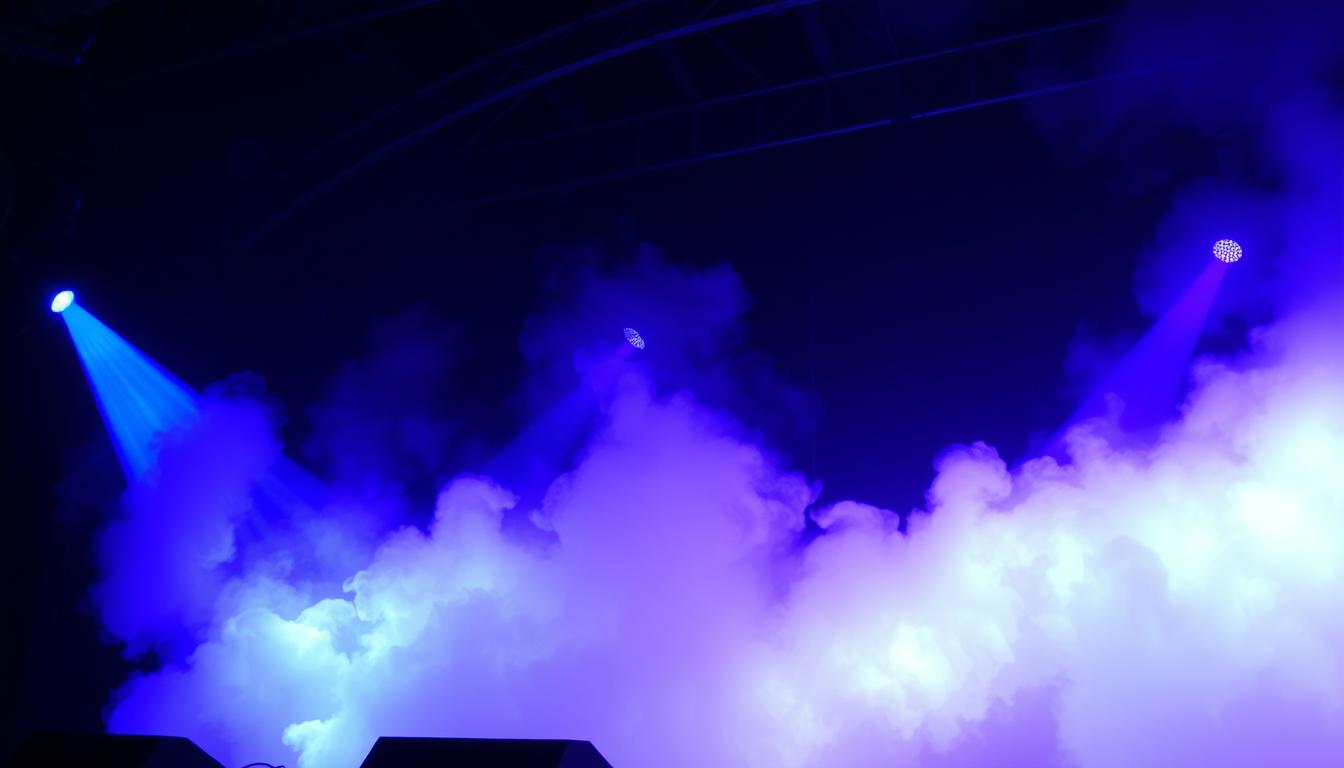
How Does a Fog Machine Work?
, by Kong Kam Joe Choi, 16 min reading time

, by Kong Kam Joe Choi, 16 min reading time
Ever wondered how a fog machine creates those thick clouds of smoke? The simplest way to think about it is like a super-fast, high-tech kettle. It takes a special liquid, heats it up incredibly quickly until it turns into vapor, and then pushes that vapor out into the cool air, where it instantly condenses into the thick fog you see. Whether you're planning a Halloween party, small concert, or theatrical production, understanding the basics of fog machines will help you create the perfect atmosphere for your event.

Before diving into how fog machines work, it's helpful to understand what's inside these devices. Every fog machine, regardless of size or price, contains three essential components that work together to create that perfect foggy effect.

These three components work in perfect harmony to transform a simple liquid into the dramatic fog effect you see at concerts, theaters, and Halloween parties. The quality of each component directly impacts the performance and reliability of your fog machine.
Now that you know the key components, let's walk through exactly how a fog machine transforms liquid into those impressive clouds. The process happens incredibly quickly, but each step is crucial to creating the perfect fog effect.
This process can repeat as long as there's fluid in the tank and the heat exchanger maintains its temperature. Higher-end machines are designed to maintain consistent fog output by carefully balancing the pump speed with the heat exchanger temperature.
Fog fluid is a carefully mixed solution of mineral oil or glycol and purified, distilled water. This special mixture is designed to create the perfect fog effect when heated and to be as safe as possible for use around people.

Different fog fluids create different effects. Some produce a thick, long-lasting fog, while others create a quick-dissipating effect. The concentration and type of glycol or glycerin in the mixture determine these properties:
IMPORTANT SAFETY WARNING: You MUST only use commercially made, water-based fog fluid designed for your machine. Never try to make your own or use other chemicals. It's dangerous and will likely break your machine. Using the wrong fluid can create toxic fumes, damage your machine, or even create a fire hazard.
Quality fog fluid is just as important as a quality machine. Cheap fluids often contain impurities that can clog your machine or create unpleasant odors. Always check your machine's manual for recommended fluid types.
Using a reliable machine and high-quality fluid is the key to creating thick, consistent fog safely. Cheap machines can have unreliable heaters, and bad fluid can clog your system.
Looking for gear you can trust for your events?
Now that you understand how a basic fog machine works, let's quickly explore the different types of atmospheric effects you might encounter. Each has its own specific use and creates a distinct look for your event.
Standard fog machines create thick, opaque clouds of smoke. They're versatile and perfect for creating dramatic effects at concerts, Halloween parties, and theatrical productions.
Haze machines create a very fine, thin mist that's used to make light beams visible. Unlike fog, haze is designed to hang in the air for hours and be nearly invisible.
Low-lying fog machines use a chiller (often with ice) to cool the fog, making it heavy so it stays close to the ground. This creates that classic "walking on clouds" effect.
Each type of machine uses the same basic principle of heating fog fluid, but with modifications to create these specific effects. Your choice depends on the atmosphere you're trying to create for your event.
Like any piece of equipment, fog machines need proper care to keep working reliably. A well-maintained fog machine will last for years and provide consistent performance for all your events.

Pro Tip: If your fog machine hasn't been used in a while, run a cleaning cycle before your event. This helps clear any dried fluid from the heat exchanger and ensures optimal performance when you need it.
Now that you understand how fog machines work, let's explore some of the most popular ways people use them to create amazing atmospheres and effects.


The versatility of fog machines makes them a valuable tool for both amateur and professional events. With the right machine and fluid, you can create effects ranging from subtle atmosphere enhancement to dramatic, thick fog that transforms an entire space.
While fog machines are generally safe when used properly, there are some important safety considerations to keep in mind to ensure everyone has a great (and safe) experience.
Important: Some people with respiratory conditions like asthma may be sensitive to fog effects. Always inform guests if you'll be using a fog machine, and consider using quick-dissipating fluid if you have concerns.
Even the best fog machines can sometimes run into issues. Here are some common problems and their simple solutions to keep your fog flowing perfectly.
This is usually caused by a clogged fluid line or nozzle. Try running cleaning solution through the machine, or check if the pump is working by listening for a humming sound when activated. Also verify there's enough fluid in the tank and that it's reaching the pump.
This typically indicates a partially clogged system or that the machine hasn't fully heated up. Ensure you've allowed adequate warm-up time (usually 5-8 minutes), and consider running cleaning solution through the machine. Also check that you're using the correct type of fog fluid.
This could indicate a problem with the heating element. Check if the power connection is secure and that you're using the correct voltage. If the machine still doesn't heat up, the heating element may need replacement (best done by a professional).
This usually means you're using low-quality fog fluid or the machine needs cleaning. Run cleaning solution through the system, then switch to a higher-quality fog fluid. Some premium fluids are specifically formulated to be odorless.
Most fog machine issues can be resolved with proper cleaning and maintenance. If problems persist, consult your machine's manual or contact the manufacturer for specific troubleshooting steps.
So, the next time you see fog at a show, you'll know the secret: it's all about a tiny, powerful 'kettle' doing its job perfectly. Understanding how a fog machine works helps you create better effects and keep your equipment running smoothly for years to come.
Whether you're creating a spooky Halloween atmosphere, adding drama to a school play, or enhancing a photography session, fog machines are a simple yet effective way to transform any space. With the right machine, fluid, and knowledge from Any Case Gear, you'll be creating professional-quality fog effects in no time!

From creating a spooky Halloween atmosphere to adding drama to a concert, the right effect matters. At Any Case Gear, we have the tools to bring your vision to life.